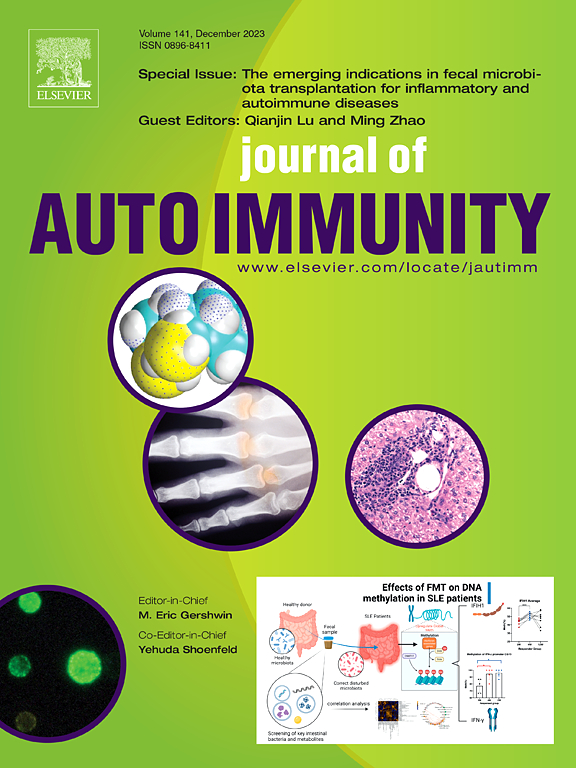Elevated type I IFN signalling directly affects CD8+ T-cell distribution and autoantigen recognition of the skeletal muscles in active JDM patients
Abstract
The link between type I IFN and adaptive immunity, especially T-cell immunity, in JDM still remained largely unclear. This study aimed to understand the effect of elevated type I IFN signaling on CD8+ T cell-associated muscle damage in juvenile dermatomyositis (JDM). This study used flow cytometry (FC) and RT‒PCR were used to examine the circulating cell ratio and type I IFN response. And scRNA-seq was used to examine peripheral immunity in 6 active JDM patients, 3 stable JDM patients, 3 juvenile IMNM patients and 3 age-matched healthy children. In vivo validation experiments were conducted using a mouse model induced by STING agonists and an experimental autoimmune myositis model (EAM). In vitro experiments were conducted using isolated CD8+ T-cells from JDM patients and mice. We found that active JDM patients showed an extensive type I IFN response and a decreased CD8+ T-cell ratio in the periphery (P < 0.05), which was correlated with muscle involvement (P < 0.05). Both new active JDM patients and all active JDM patients showed decreased CD8+ TCM cell ratios compared with age and gender matched stable JDM patients (P < 0.05). Compared with new pediatirc systemic lupus erythematosus (SLE) patients, new active JDM patients displayed decreased CD8+ T-cell and CD8+ TCM cell ratios (P < 0.05). Active JDM patient skeletal muscle biopsies displayed an elevated type I IFN response, upregulated MHC-I expression and CD8+ T-cell infiltration, which was validated in EAM mice. sc-RNAseq demonstrated that type I IFN signalling is the kinetic factor of abnormal differentiation and enhances the cytotoxicity of peripheral CD8+ T cells in active JDM patients, which was confirmed by in vivo and in vitro validation experiments. In summary, the elevated type I IFN signalling affected the differentiation and function of CD8+ T cells in active JDM patients. Skeletal muscle-infiltrating CD8+ T cells might migrate from the periphery under the drive of type I IFN and increased MHC I signals. Therapies targeting autoantigen-specific CD8+ T cells may represent a potential new treatment direction.

 求助内容:
求助内容: 应助结果提醒方式:
应助结果提醒方式:


